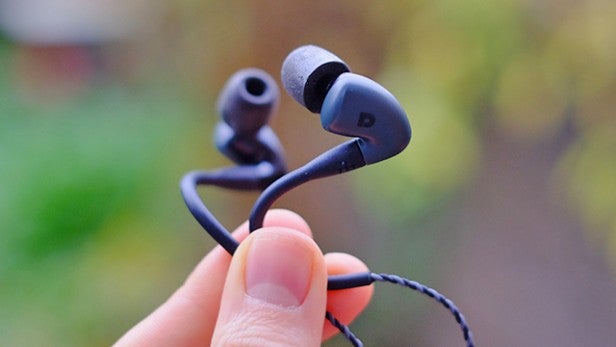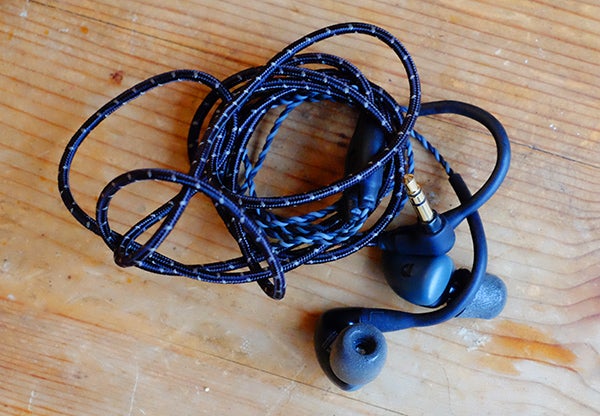Audiofly AF140 Review
Audiofly AF140
Honey-glazed triple-driver earphones
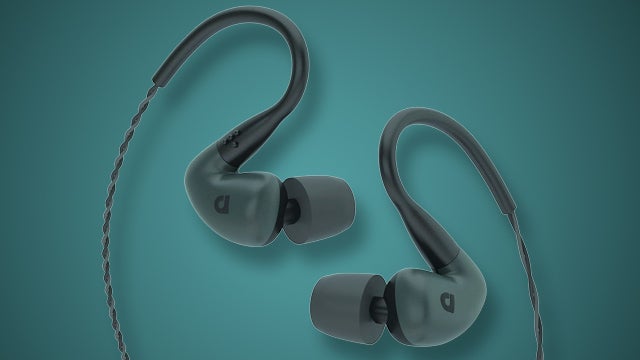
Verdict
Pros
- Great mid-range
- Involving, natural sound
Cons
- Mid-bass thickness
- Conservative treble
- Tangly cable
Key Specifications
- Review Price: £249.99
- Dual balanced armatures plus dynamic driver
- Right-angle jack
- Ear hook design
What are the Audiofly AF140?
Audiofly has been selling earphones in Australia and the US for a while now, but it’s only recently made its move on the UK. The Audiofly AF140 are high-end triple-driver earphones that cost £249.99, but are far from the most expensive models in Audiofly’s arsenal.
These are the most accessible tri-driver pair in the line-up, with a low-end dynamic driver providing that ear-pleasing warmth you rarely get with pure balanced armature earphones. As such, they don’t have quite the analytical and perfectly separated sonic signature that some of you might be after.
However, with a rather easy-going tone, natural mids and reasonably detailed treble, they offer an extremely pleasant listen.
SEE ALSO: Best Headphones Round-up
Audiofly AF140 – Design and Comfort
While we find the Audiofly AF140 sound friendly, the design isn’t. Rather like the Shure SE535, and the classic UE Triple.fi 10 earphones, the fit is rather involved.
Rather than leaving you to simply plug them into your ears, the Audiofly AF140 need a bit of moulding in order to get the right fit. The cable fires up and out of the earphones, trailing over your ears, rather than heading straight to the ground.
Some people seem to hate this style and how fiddly it makes the fit, but there are legitimate reasons for it – hence why we’ve seen it so many times in high-end earphones. It helps to avoid microphonic noise caused when the cable rustles and bounces off your clothing, by dampening any vibrations at the point of your earlobes. Microphonic noise is frequently a problem in IEM (in-ear monitor) earphones, exacerbated by a good fit in your ear canal.
So before you have a go at the Audiofly AF140 for their funny-looking – but actually quite standard – design, bear this in mind.
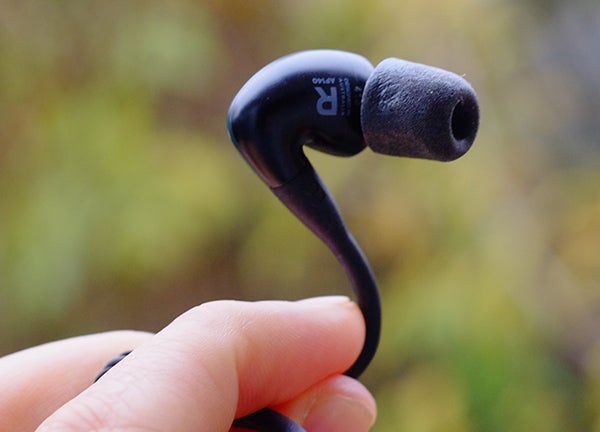
The key to getting the AF140 to feel right is to bend the semi-rigid earpiece stems around your ears. You can afford to be a bit rough with them, in our experience. After they spring back a little, the stems more or less retain their shape, meaning you’re effectively customising the earphones for your ears.
As well as reducing microphonics, the design also helps keep the Audiofly AF140 in place. Similar designs are used among sports headphones and you could feasibly use these for running. We’re not sure how we feel about sweating all over £250 earphones on a regular basis, though.
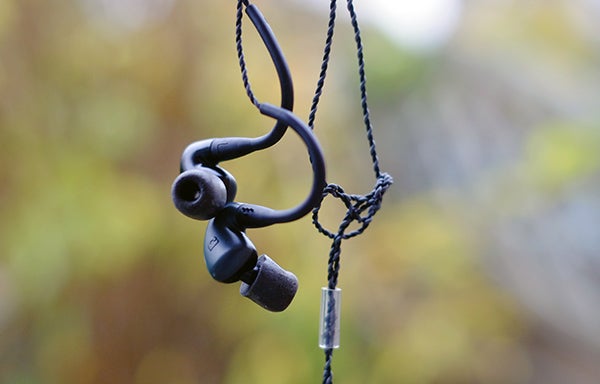
There’s also one other practical issue with the Audiofly AF140: they’re some of the most tangly earphones around. Or at least part of them is.
The cable has a two-part structure, the bottom of which is thick, fabric-coated and virtually immune to tangling. It’s the rubbery braided bit up top that’s the issue. It seems to get tangled up in itself and the earpieces every five minutes, and untangling is an awkward process thanks to the shape of the earphones. Patience is needed.
Audiofly AF140 – Accessories
To aid any fit problems you might have, the Audiofly AF140 come with loads of different tips. There are only three sizes – small, medium and large – but with single-flanged Silicone, dual-flanged Silicone and Comply foam to choose from, most people should have no problems.
We should also note that the sound aperture of these earphones is absolutely tiny, a bit like the Shure SE range. This means that, despite their size, they should suit people with very narrow ear canals – not something I can personally relate to, with ear holes the size of alleyways.
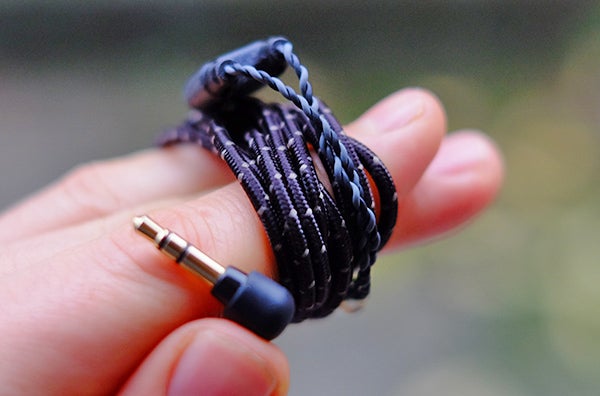
Also bundled are a 6.3mm adapter, airplane adapter, carry case and shirt clip.
The thing to note here is that there’s no inline remote. If you listen to music through your phone you’ll have to control your tunes directly.
The Audiofly AF140 cable is also completely non-removable, so you need to be extra careful when using them if you want them to last for years.
Audiofly AF140 – Sound Quality
There are many words used to describe headphones and, like well-spoken wine critics, some of them make you want to switch off instantly. Without wanting to do the same to you, the Audiofly AF140 might be described as ‘musical’.
“What on earth else is it going to be?” you may well ask. We mean musical as opposed to analytical: it’s a compliment with inherent criticisms in this case.
The Audiofly AF140 are smooth and warm-sounding, with a natural tone that makes vocals in particular sound gorgeous. That tonality comes almost exclusively from the mid-range, which – like the Shure SE425 – is really quite excellent.
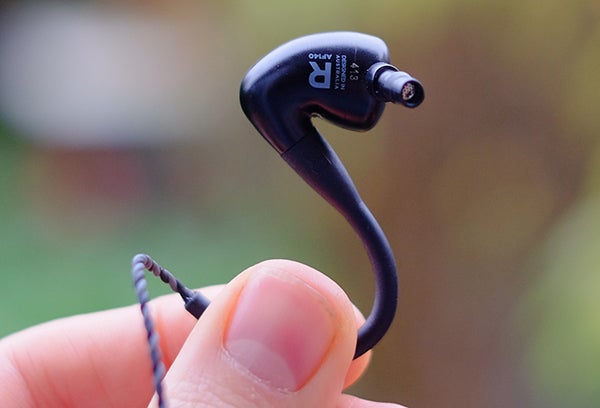
We don’t find these earphones particularly challenging: they want you to enjoy music rather than present details you’ve never heard before. However, their presentation of the mid-range zone, where vocals live, is great. Natural mids plus great texturing in this area are just perfect for delivering stripped-down vocal performances.
The Audiofly AF140 also offer a nice wide and involving soundstage, which is naturally a positive no matter what you’re listening to.
There are some elements we don’t love quite so much, though.
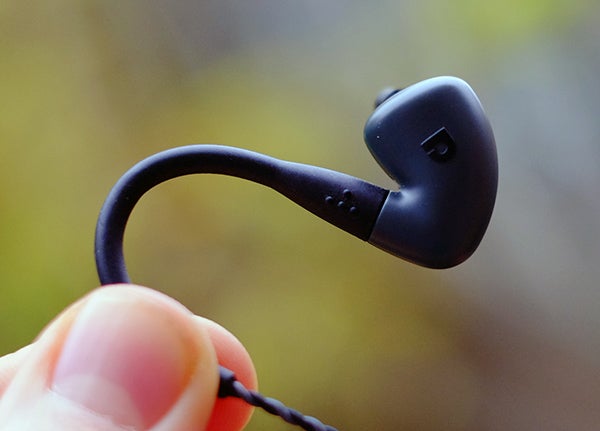
Audiofly needed to separate the AF140 from the higher-end AF160 and AF160, which use triple balanced drivers rather than the dual-armature, single-dynamic combo found here. As a result, the AF140 have a very warm tone that really has too much mid-bass, which can appear to clog up the sound a little with resonance-prone acoustic instruments.
Some of you will simply find this extra ‘warmth’ to be a positive, but we look for very precise separation and imaging in an earphone of this calibre. And the AF140 doesn’t quite meet expectations with all material. This mid-bass bulge can also appear to add flab to the otherwise good bass performance. As a whole, the bass response doesn’t have the discipline of the best £250 earphones.
We’re also not entirely happy with the Audiofly AF140’s treble extension. While top-end detail is good, its reach is pretty conservative, meaning that tingly openness you get with some of the best high-end earphones is absent. We’d offer some examples, but favourites such as the Phonak PFE232 have been discontinued, and the Shure SE series makes similar treble roll-off moves. It’s not altogether a great time for high-end in-ear models, much as the headphone market as a whole has expanded massively in the last few years.
Should buy the Audiofly AF140?
If you’re looking for reference earphones that are going to rip apart your music and uncover hidden depths you’ve never noticed before, the Audiofly AF140 probably aren’t for you. The thick mid-bass and deliberately timid treble don’t allow for that sort of highly forensic presentation. And at times we found that disappointing, especially in the overly warm tone.
However, we can imagine many preferring this sort of approach to a purely analytical earphone. The fairly easygoing style is very pleasant if you’re not listening with critical ears and enjoy a little false warmth with your audio.
Verdict
Higher-end earphones for people who’d rather have a warm, easygoing tone than the most faithful audio reproduction.
Next, read more Headphones Reviews


